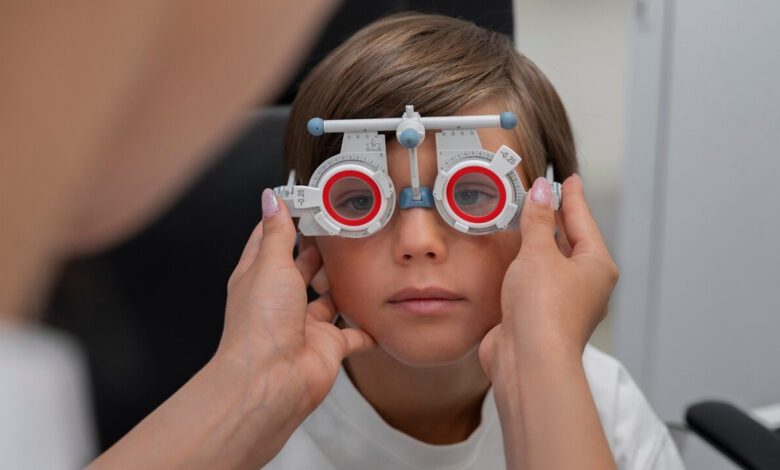Why Kids Today Are Developing Myopia So Early—and What Parents Can Do

In the past two years, more children than ever before have been diagnosed with myopia, or nearsightedness. A condition once exclusive to teenagers and adults is now appearing in children as young as six or seven. This has initiated concerns among parents and doctors alike about the cause of the surge and how to prevent it.
Understanding Myopia in Children
Myopia happens when the eyeball becomes a little longer than average, or when the cornea is too steep. This causes light to land in front of the retina rather than exactly on it, and for distant objects to blur. Although there is a genetic factor involved, youngsters will develop myopia if they inherit it from one parent or even both. Environmental factors are more responsible for the condition arising prematurely.
Why Myopia Is Happening at an Earlier Age
Too Much Screen Time
Smartphones are a ubiquitous part of children’s lives. Hours spent working on tablets, smartphones, and computers translate to additional hours spent concentrating on objects brought near. This increased near work wearies the eye muscles and accommodates seeing near objects, leading to the progression of myopia.
Not Enough Outdoor Time
Evidence indicates that reducing outdoor activity is closely associated with increasing childhood myopia. Natural daylight assists in regulating eyeball growth and overall eye wellbeing. As children today play outside much less, their eyes are not receiving this important environmental stimulus.
Educational Stress and Reading Rituals
Early school pressure and prolonged reading or writing also encourage near-work strain. Ongoing close work with insufficient breaks can speed up myopic progression.
Genetic and Environmental Interaction
Children whose parents are at least one of them being myopic are predisposed to develop it as well. But environmental factors like screen use and limited daylight can enhance genetic risk further.
Signs Parents Should Watch For
Early detection is crucial to successful myopia management for children. Indicating signs parents should watch out for are:
- Standing or sitting too close to TV sets or computers
- Headache or tired eyes complaints are common
- Trouble reading the board at school
- Constant rubbing of the eyes or constant blinking
If any of these are observed, an eye checkup is in order. Early detection can arrest the progression of the condition and result in normal eye growth.
Modern Methods of Controlling Myopia
The good news is that contemporary vision care provides efficient ways of controlling and decelerating myopia progression. Myopia management for children professionally typically involves a blend of:
- Special Contact Lenses or Glasses: There are lenses that will modify the manner in which light comes to rest upon the retina and will decelerate eye expansion.
- Atropine Eye Drops: Atropine eye drops in low doses have been shown to retard eyeball elongation in children.
- Lifestyle Modifications: Outdoor playtime, reduction of screen time, and adherence to the “20-20-20 rule” (each 20 minutes, gaze 20 feet away for 20 seconds) can be incredibly helpful.
These treatments work best when customised individually to each child’s unique demands through frequent eye examinations and monitoring.
Preventing Myopia Progression
Even if there is some inevitability of myopia, parents can take steps to decelerate it. Prioritise outdoor time for at least an hour or two a day and reduce excess screen time. Accommodating good reading or study posture, adequate lighting, and a yearly eye examination are also important habits.
A Note on Professional Care
Early and individualised treatment is the solution to good eye care. Facilities such as Eye Care of Rigby offer comprehensive vision examinations and advanced treatment methods for meeting the changing visual needs of children. Expert consultation is a measure which can help in taking prompt action before the condition is allowed to advance.
The epidemic of childhood myopia is a public health issue that requires attention and publicity. Educating themselves on what causes it and watching for early signs, parents can take charge of safeguarding their children’s sight. Through balanced use of screens, outdoor time, and timely expert care, it’s easy to control myopia effectively and give children sharp sight in the long



